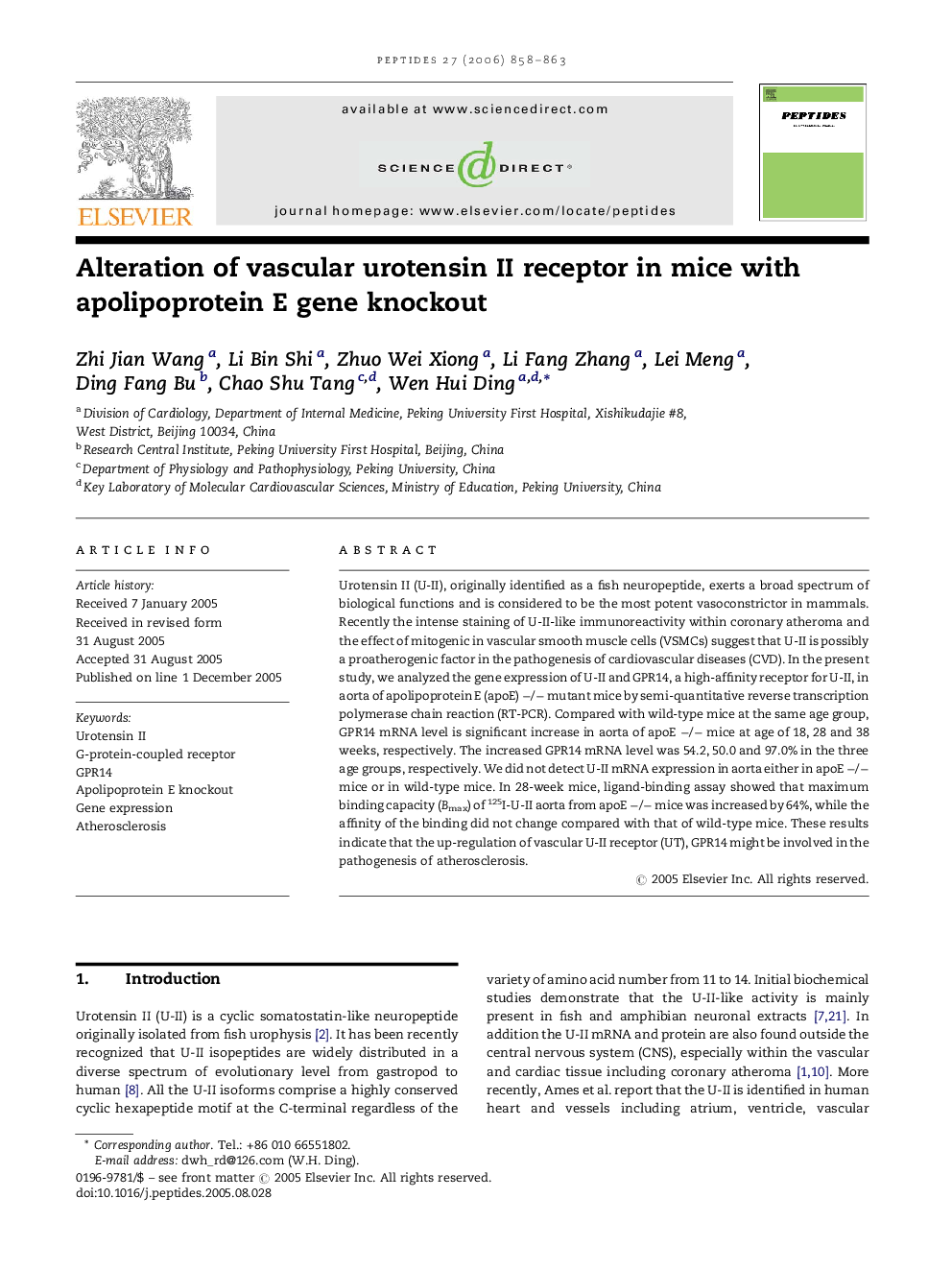| Article ID | Journal | Published Year | Pages | File Type |
|---|---|---|---|---|
| 2008346 | Peptides | 2006 | 6 Pages |
Urotensin II (U-II), originally identified as a fish neuropeptide, exerts a broad spectrum of biological functions and is considered to be the most potent vasoconstrictor in mammals. Recently the intense staining of U-II-like immunoreactivity within coronary atheroma and the effect of mitogenic in vascular smooth muscle cells (VSMCs) suggest that U-II is possibly a proatherogenic factor in the pathogenesis of cardiovascular diseases (CVD). In the present study, we analyzed the gene expression of U-II and GPR14, a high-affinity receptor for U-II, in aorta of apolipoprotein E (apoE) −/− mutant mice by semi-quantitative reverse transcription polymerase chain reaction (RT-PCR). Compared with wild-type mice at the same age group, GPR14 mRNA level is significant increase in aorta of apoE −/− mice at age of 18, 28 and 38 weeks, respectively. The increased GPR14 mRNA level was 54.2, 50.0 and 97.0% in the three age groups, respectively. We did not detect U-II mRNA expression in aorta either in apoE −/− mice or in wild-type mice. In 28-week mice, ligand-binding assay showed that maximum binding capacity (Bmax) of 125I-U-II aorta from apoE −/− mice was increased by 64%, while the affinity of the binding did not change compared with that of wild-type mice. These results indicate that the up-regulation of vascular U-II receptor (UT), GPR14 might be involved in the pathogenesis of atherosclerosis.
